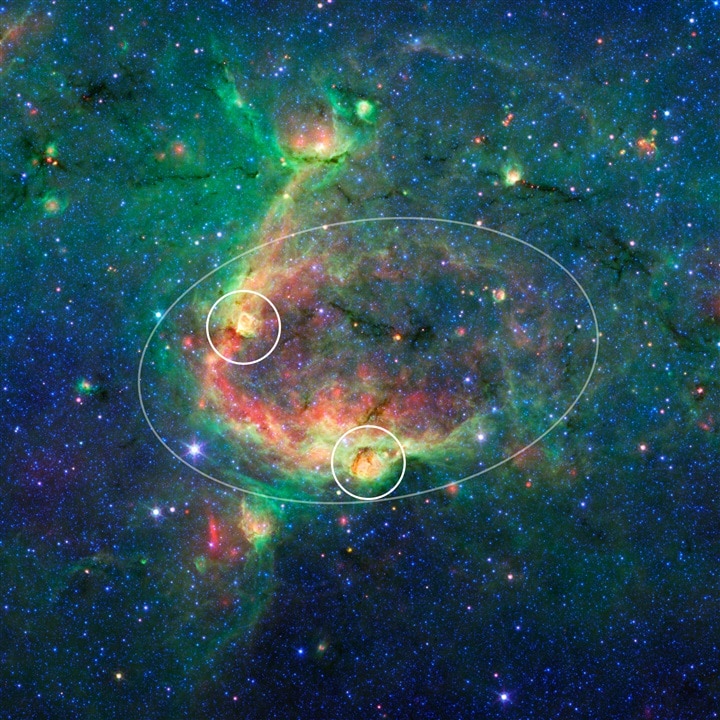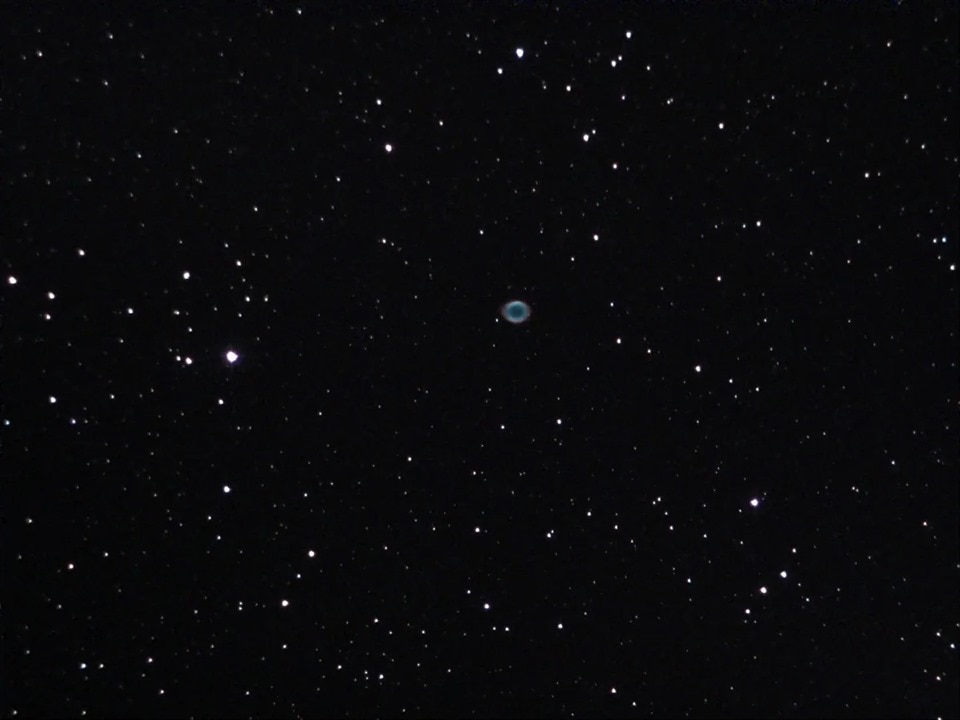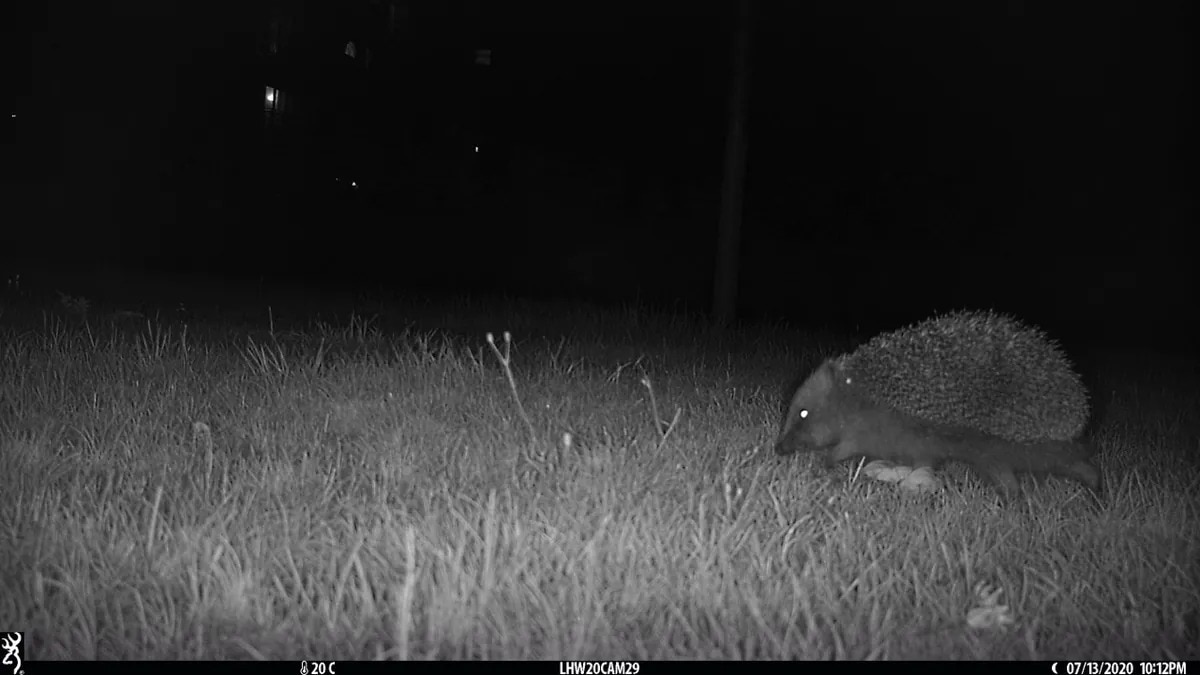
Citizens participating in the milky way project discovered this hierarchal bubble structure. (Image Credit: NASA/JPL-Caltech/University of Wisconsin)
For the past 15 years, citizen scientists have made contributions in every field. New projects are created monthly to keep the public involved and updated in research efforts. By doing so, humanity can make discoveries, analyze data, and find different approaches to keep the public engaged. After all, science is meant to be shared with the public.
Citizen scientists identifying massive data sets transformed astronomy. For instance, online volunteers work together to help identify various galaxies, the original goal of Galaxy Zoo. This has now expanded into a wide range of fields, contributing to projects from literature to medicine.

A Unistellar telescope in central London captured this image of a ring nebula. (Image Credit: Image Credit: Alfredo Carpineti courtesy of Unistellar)
Telescopes developed by Unistellar also open the gates for citizen science. These devices collect light, allowing non-formal scientists to study faint objects. With dedicated software integration, these telescopes can also be utilized in cities. Plus, they automatically identify what it’s being pointed at in the sky. Using the telescopes to connect hundreds of people worldwide enabled the company to tackle remarkable scientific campaigns, such as verifying exoplanets orbiting other stars and figuring out an Earth-threatening asteroid’s properties.
Unistellar partnered up with NASA, contributing to its Lucy mission. “Unistellar’s network of citizen astronomers successfully detected three of the Trojan asteroids that NASA’s Lucy mission will visit: 617 Patroclus, 21900 Orus, and 11351 Leucus,” the company wrote.

(Image Credit: Hogwatch/Instant Wild/ZLS)
Camera traps are often deployed to study animals in their natural habitat without humans present. These cameras help determine an animal’s population size, habits, movement, etc. They can also provide visuals of different species in that habitat. Typically, camera traps capture thousands of images, which can be tiresome for a small team to look through. That’s why Instant Wild, a project from the Zoological Society of London, was formed. Its goal involves showing people these photos to identify any species shown in the photos. Mistakes don’t matter much with this technique because they represent a small group out of the thousands of correctly identified images. So people can join the project without worrying about providing an incorrect answer.
The platform is currently undertaking 18 projects. When it started, the project used live field feeds but now includes pre-recorded images.

The JWST captured this image of Jupiter. (Image Credit: NASA / ESA / CSA / Jupiter ERS Team / Judy Schmidt)
Amateur astronomer Judy Schmidt is well-known for her work with the JWST, featured by NASA and the ESA. Some of her work showcases a stunning view of Jupiter, distant galaxies, and shells around a star. NASA provides public access to its data and wants science citizens to process it, which is where Schmidt came in. There are plenty of webpages pages dedicated to each mission and raw images for the public to get involved.
Have a story tip? Message me at: http://twitter.com/Cabe_Atwell
